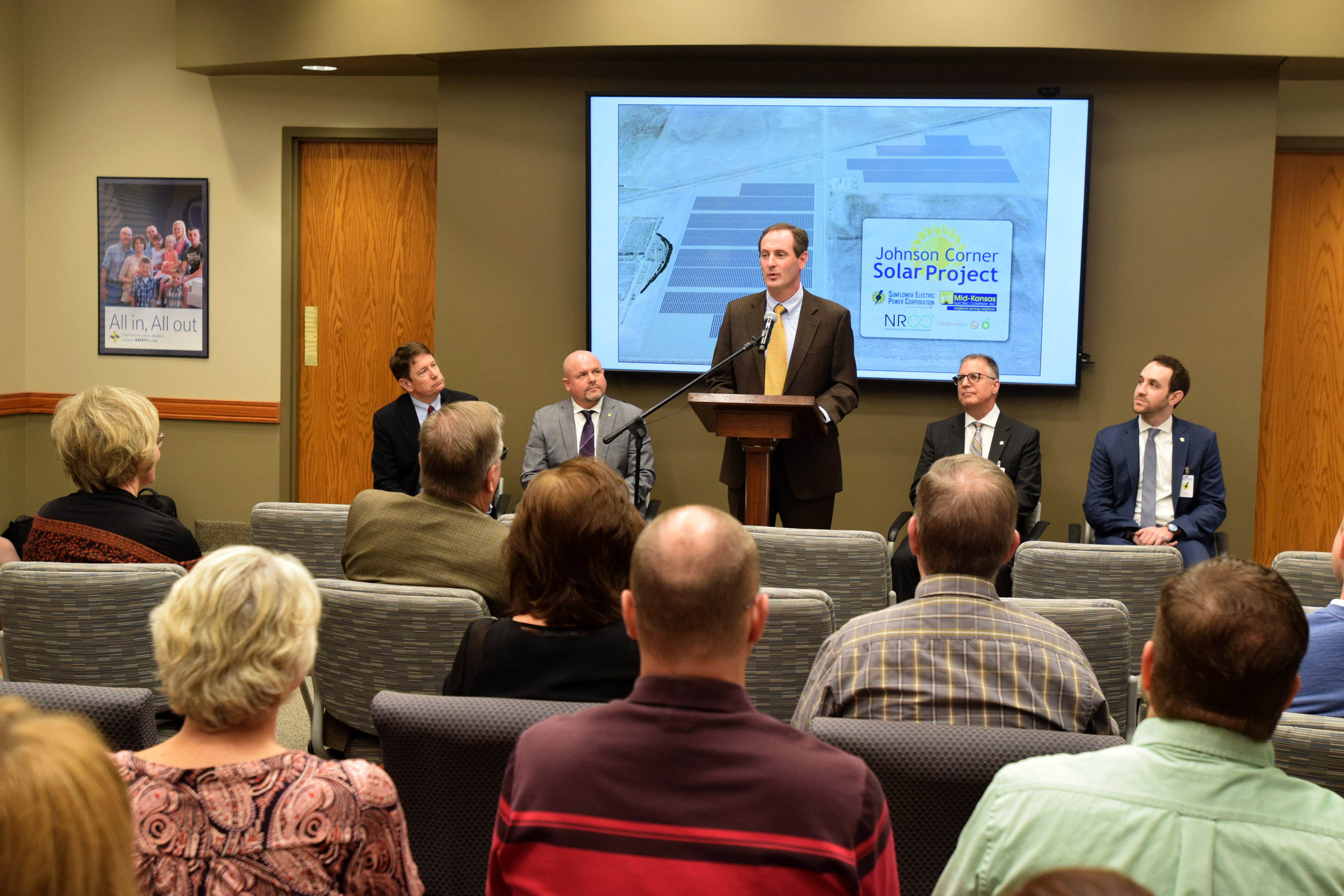
Electric cooperatives will tap power from the largest solar array in Kansas to help meet demand for electricity particularly during air conditioning and summer irrigation season.
“The benefits of solar will add diversity to our existing energy generation portfolio,” said Stuart Lowry, president and CEO of Mid-Kansas Electric Company and Sunflower Electric Power Corp.
The two Hays, Kansas-based G&Ts are major power suppliers to the six distribution cooperatives and one wholly owned subsidiary that share their ownership. They’ve signed a 25-year power purchase agreement for 20 megawatts of solar generation from a 241-acre site near Johnson City in the southwestern corner of the state.
“This solar facility will generate energy during our summer peaks, providing protection against high market prices during times of increased energy demand,” said Lowry.
The location was selected “because of its strong generation potential with some of the best solar irradiation in the Midwest,” said Lowry. He added that strategically placing generation at the Stanton County site is expected to extend the life of a transmission line, avoiding the need for costly upgrades.
Lowry and co-op officials announced plans for the project during a news conference in Hays with Republican Lt. Gov. Tracey Mann late last month. Construction of the 86,000 solar panels will begin in 2019.
“My great-great-grandfather, John Winger, actually homesteaded in Stanton County, about 10 miles from this site,” said Mann, who still has many relatives living in the area.
The G&Ts have partnered with the National Renewables Cooperative Organization and Lightsource BP, a solar developer, which will build, own and operate the array.
The Johnson Corner Solar Project facility is a good fit for the G&Ts’ portfolios, co-op officials said. They cited its daytime generation potential during summer peak demand as an advantage over wind generation, which typically is best at night and during winter months.